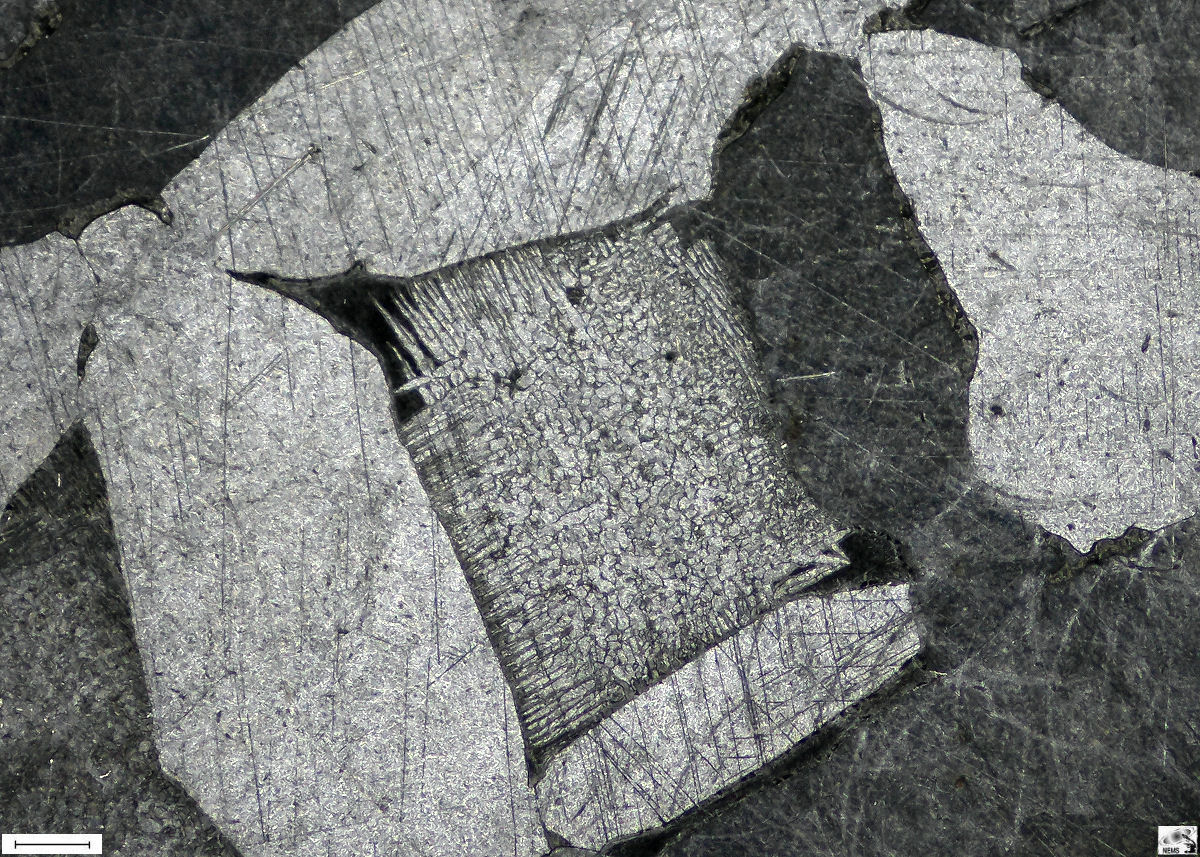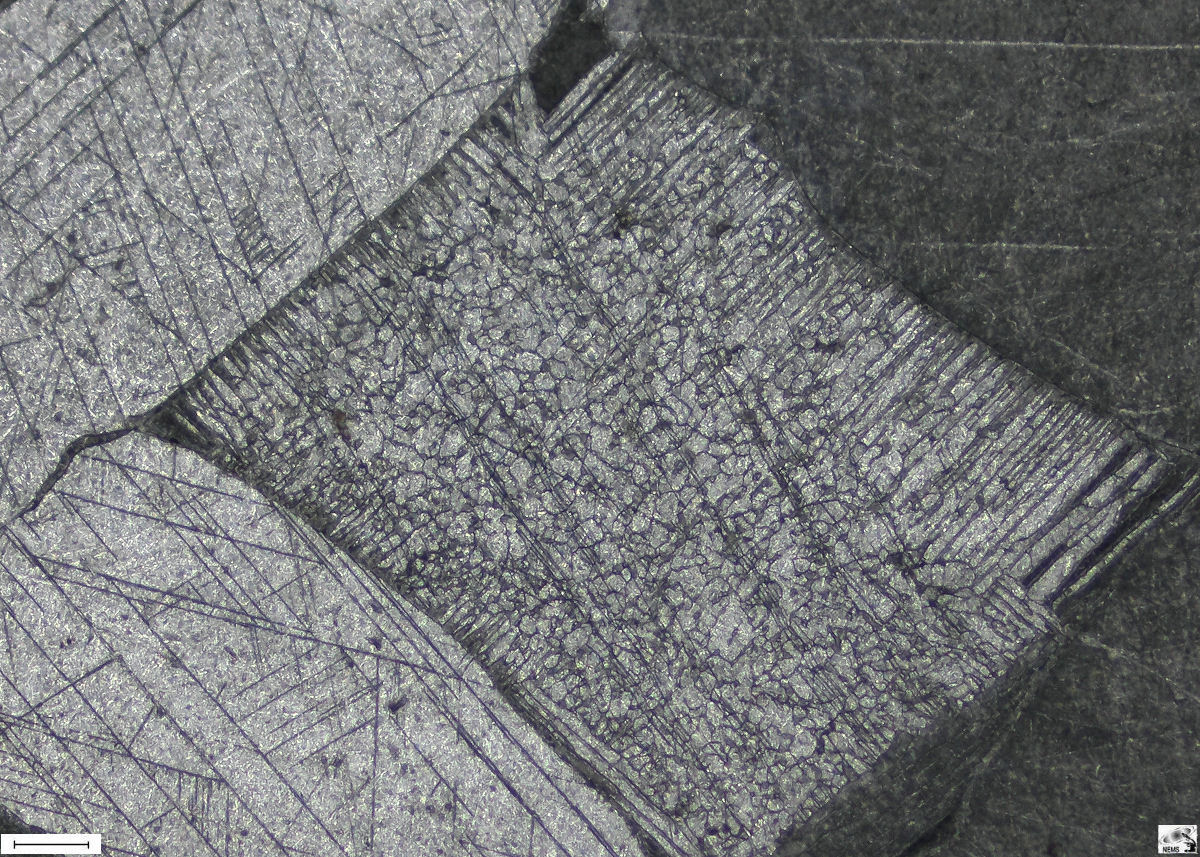Net plessite is a secondary
structure that develops in iron meteorites through a complex cooling process
following their initial solidification. The meteorite's metallic component
begins as taenite, a high-nickel, face-centered cubic (FCC) phase stable at
elevated temperatures. As the meteorite cools, this taenite starts to transform
into kamacite, a lower-nickel, body-centered cubic (BCC) phase, through a
sequence of intermediate stages and reactions.
A key player in the formation of net plessite is
martensite, a supersaturated solid solution of carbon in iron. This phase forms
rapidly below the martensite start temperature (Ms) in a diffusionless
transformation. As cooling continues, the martensite breaks down into a
fine-scale mix of kamacite and taenite, creating the structure known as
plessite. This mixture often appears in the remaining taenite zones, called
"fields," and takes on a distinctive net-like pattern.
These net plessite fields emerge in the spaces
between the larger, pre-existing lamellae of kamacite and taenite.
|

